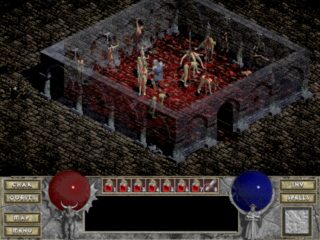RPG games, or role-playing games, have come a long way since their humble beginnings as pen-and-paper adventures. From classic tabletop games like Dungeons & Dragons to immersive virtual reality experiences, RPG games have captivated players with their rich storytelling, character development, and strategic gameplay.
Some of the first computer games were RPGs. Initially, they were entirely text-based; then, from Dunjonquest: Temple of Apshai, they began incorporating simple graphics. Richard Garriot's Akalabeth: World of Doom was the first first-person RPG, but Lord British real masterpiece was the Ultima series, one of the most important franchises in the RPG genre, along with Wizardry, Might and Magic, and others. Traditional computer RPGs feature turn-based combat, as seen in The Bard's Tale, but also in other titles such as SSI's Dark Sun: Shattered Lands.
The dungeon crawler sub-genre was made popular by Dungeon Master in 1987 and later by Eye of the Beholder and many other titles like Ishar: Legend of the Fortress. These titles featured a first-person view, in pseudo-3D, with real-time combat.
The Immortal and Darkmere: The Nightmare's Begun are examples of isometric RPGs, and also, the masterpiece Ultima VII: The Black Gate uses a kind of isometric top-down perspective.
To see a full 3D graphical implementation but also a more faithful roleplaying experience, we need to wait for The Elder Scrolls: Arena and The Elder Scrolls II: Daggerfall. These games included gameplay that involved exploring vast, detailed landscapes and interacting with lifelike characters.
The RPG genre doesn't end here because we also have Japanese RPGs, like Sweet Home, or tactical RPGs like Jagged Alliance.
Finally, we cannot forget the legendary action-rpg Diablo, the first chapter of the popular series, probably the most iconic name in all the computer role-playing games genre, a title that redefined the genre with randomly generated levels and frenetic hack-and-slash combat.














